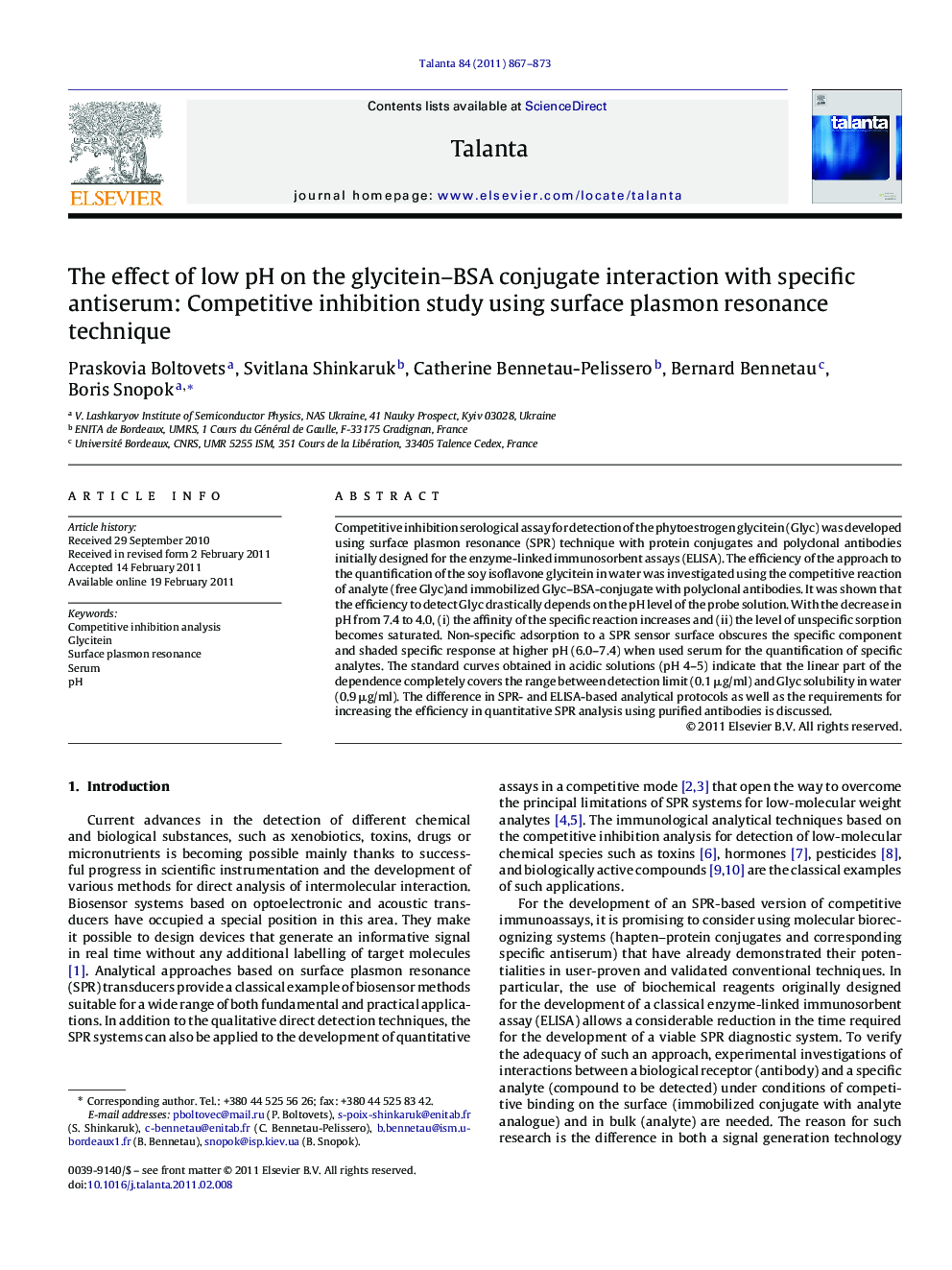| Article ID | Journal | Published Year | Pages | File Type |
|---|---|---|---|---|
| 1244183 | Talanta | 2011 | 7 Pages |
Competitive inhibition serological assay for detection of the phytoestrogen glycitein (Glyc) was developed using surface plasmon resonance (SPR) technique with protein conjugates and polyclonal antibodies initially designed for the enzyme-linked immunosorbent assays (ELISA). The efficiency of the approach to the quantification of the soy isoflavone glycitein in water was investigated using the competitive reaction of analyte (free Glyc)and immobilized Glyc–BSA-conjugate with polyclonal antibodies. It was shown that the efficiency to detect Glyc drastically depends on the pH level of the probe solution. With the decrease in pH from 7.4 to 4.0, (i) the affinity of the specific reaction increases and (ii) the level of unspecific sorption becomes saturated. Non-specific adsorption to a SPR sensor surface obscures the specific component and shaded specific response at higher pH (6.0–7.4) when used serum for the quantification of specific analytes. The standard curves obtained in acidic solutions (pH 4–5) indicate that the linear part of the dependence completely covers the range between detection limit (0.1 μg/ml) and Glyc solubility in water (0.9 μg/ml). The difference in SPR- and ELISA-based analytical protocols as well as the requirements for increasing the efficiency in quantitative SPR analysis using purified antibodies is discussed.
